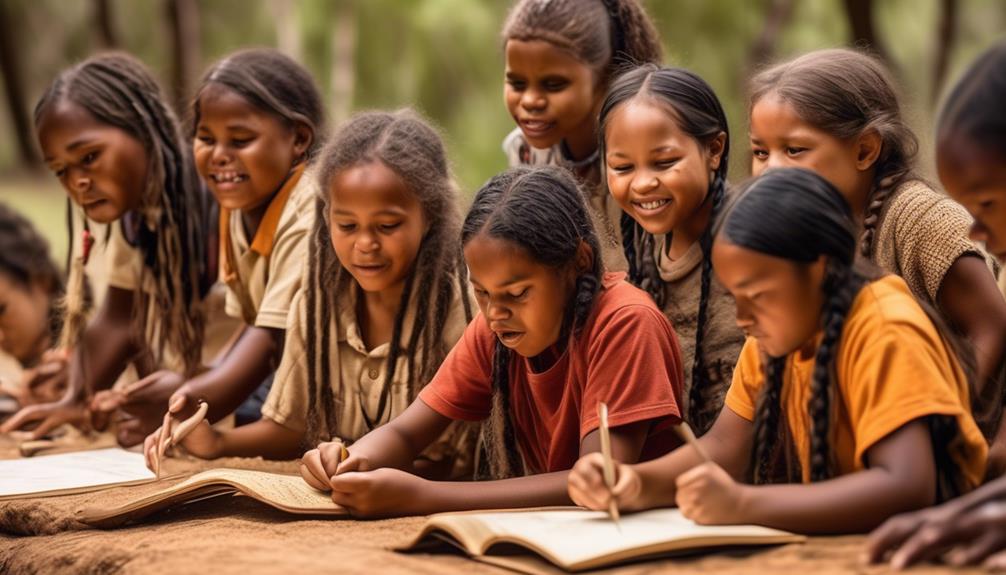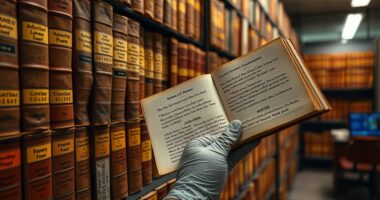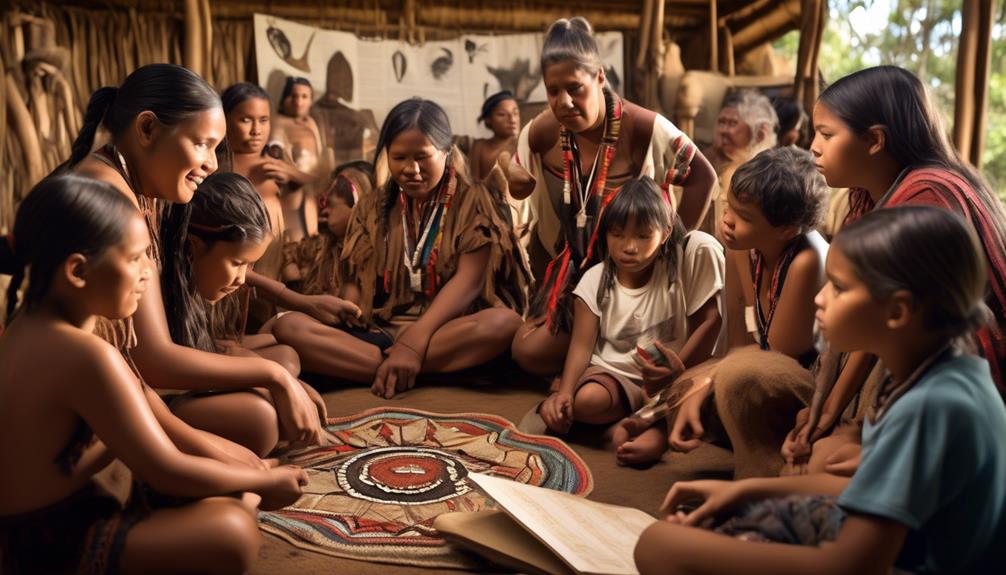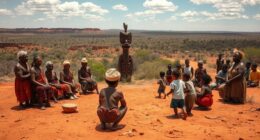In the past few years, the importance of Indigenous languages in the education field has been more widely recognized, with efforts to protect and promote these languages growing stronger.
However, there are still significant challenges in implementing effective language policies and programs.
As we explore the advancements and progress in Indigenous Australian language policies, it becomes evident that innovative approaches are crucial for the success of language programs.
The integration of Indigenous languages in education has shown promising results, but what are the key factors that contribute to their sustainability and impact?
Stay tuned as we uncover the innovative strategies and progress in language programs that are shaping the future of Indigenous language education.
Key Takeaways
- Indigenous languages in Australia reflect a deep connection to the land and embody intricate understandings of the environment, geography, and spiritual beliefs.
- Government support for language preservation includes initiatives such as the Australian Indigenous Languages Online Project, funding for Indigenous Language Centres, collaboration with SBS, support for language events, forums, and activities, and promotion of bilingual education.
- Community-led language revitalization efforts prioritize the involvement of indigenous communities and contribute to the preservation of traditional knowledge, cultural traditions, and linguistic diversity.
- Innovative approaches in language education, such as bilingual education programs, language immersion initiatives, collaboration with Indigenous Language Centres, language surveys, and professional development opportunities, are being utilized to advance Indigenous language programs.
Historical Context of Indigenous Australian Languages
Exploring the historical context of Indigenous Australian languages reveals a complex and rich tapestry of linguistic diversity and cultural significance. Indigenous languages are deeply intertwined with the heritage, traditions, and knowledge systems of Aboriginal and Torres Strait Islander communities. These languages reflect the deep connection to the land, with many words and phrases embodying intricate understandings of the environment, geography, and spiritual beliefs.
Furthermore, the historical significance of Indigenous languages extends to the Torres Strait Islander communities, where languages such as Torres Strait Creole have evolved as a result of cultural exchange and interaction.
The preservation of local Indigenous languages isn't merely a matter of linguistic diversity but also a fundamental aspect of cultural identity and the rights of Indigenous peoples. These languages carry within them the wisdom and knowledge of generations, encompassing traditional practices, medicinal knowledge, and storytelling traditions.
Understanding the historical context of Indigenous languages is crucial for appreciating the profound importance of Indigenous language programs in preserving and revitalizing these invaluable forms of Indigenous knowledge. By recognizing the historical significance of these languages, we can better advocate for the implementation of policies and programs that support the continued flourishing of Indigenous languages within their respective territories.
Government Support for Language Preservation

The Australian government provides comprehensive support for the development and maintenance of Indigenous languages through various initiatives and collaborations. This support reflects our commitment to preserving cultural diversity and promoting Indigenous education. Some key initiatives and collaborations include:
- Australian Indigenous Languages Online Project: This initiative focuses on developing language resources and digital tools to support language preservation and revitalization efforts.
- Funding for Indigenous Language Centres: The government provides financial support to these centers to facilitate language maintenance programs and activities within the Indigenous community.
- Collaboration with the Special Broadcasting Service (SBS): Working with SBS, we aim to promote innovative teaching and learning platforms for Indigenous languages, ensuring broader access to language resources.
- Support for Language Events and Activities: We actively collaborate with Indigenous communities to organize language events, forums, and activities, strengthening our relationship with funding recipients.
- Promotion of Bilingual Education: Emphasizing the importance of Indigenous languages, we collaborate with educational institutions to promote bilingual education and access to knowledge in Aboriginal and Torres Strait Islander languages.
Through these initiatives and collaborations, the government is dedicated to supporting language preservation, revitalization, and the overall preservation of Indigenous culture.
Community-Led Language Revitalization Efforts
With a focus on empowering indigenous communities, Community-Led Language Revitalization Efforts actively engage indigenous speakers, leaders, and organizations in preserving and promoting their languages and cultures. These efforts prioritize the involvement of indigenous communities in driving the revitalization and maintenance of their languages.
By actively involving indigenous communities in language revival initiatives, these efforts contribute to the preservation of traditional knowledge, cultural traditions, and linguistic diversity. Community-Led Language Revitalization Efforts often include the development of language programs, resources, and educational initiatives tailored to the specific needs and aspirations of the community.
Through initiatives such as language nests, indigenous communities are able to create environments where language learning is integrated into cultural practices, ensuring the intergenerational transmission of indigenous languages.
Innovative Approaches in Language Education

Our understanding of the importance of indigenous languages in preserving cultural identity and traditional knowledge naturally leads us to explore innovative approaches in language education. In our quest to advance the revitalisation of Indigenous languages, we've uncovered several innovative strategies that have shown promise in language education programs for Indigenous children and students in remote Indigenous communities.
These approaches include:
- Bilingual education programs that integrate Indigenous languages into the curriculum, allowing students to learn in their mother tongue while also gaining proficiency in the dominant language.
- Language immersion initiatives that provide intensive language learning experiences, creating opportunities for students to become fluent speakers and maintain their cultural heritage.
- Collaborative efforts with Indigenous Language Centres to develop culturally relevant and engaging language resources and teaching materials.
- Utilising language surveys to assess the current state of Indigenous languages and inform the development of targeted language revitalisation programs.
- Providing professional development opportunities for teachers to enhance their skills in teaching Australian Indigenous languages and implementing effective language education strategies.
Impact of Indigenous Language Programs
Indigenous language programs play a pivotal role in preserving cultural heritage and fostering educational equity for Indigenous communities. These programs are vital for the revitalization and maintenance of Indigenous languages, which are deeply intertwined with the cultural rights and practices of Indigenous populations. By including Indigenous languages in educational settings, such as schools, these programs enable Indigenous communities to take an active role in their children's education, contributing to a more inclusive and culturally diverse educational environment. Moreover, Indigenous language programs have a significant impact on the overall goal of preserving Australia's languages, as they play a crucial role in the broader context of Indigenous language policies and the revitalization of Indigenous cultures.
| Impact of Indigenous Language Programs | |
|---|---|
| Preservation of cultural heritage | Fostering educational equity |
| Revitalization of Indigenous languages | Contribution to inclusive education |
| Support for Indigenous language policies | Enhancement of cultural diversity |
The impact of Indigenous language programs extends beyond educational outcomes; it also influences broader Indigenous policy and legislative frameworks, supporting the future of Australia's languages. Therefore, these programs are indispensable for the preservation and promotion of Indigenous languages and cultures.
Frequently Asked Questions
What Is the Language Education Policy in Australia?
In Australia, the language education policy emphasizes language revitalization, cultural preservation, and linguistic diversity.
Indigenous language learning, language documentation, and community engagement are prioritized. Educational strategies focus on policy implementation and language maintenance.
The policy supports Indigenous communities in actively participating in their children's education and advocates for the inclusion of Indigenous languages in schools. This approach fosters collaboration and respect, ensuring the vitality and continuity of Indigenous languages and cultures.
How Have Aboriginal Languages Influenced English?
Aboriginal languages have significantly influenced English through language borrowing, reflecting a rich cultural exchange and indigenous influence.
This linguistic assimilation has shaped the language evolution, resulting in lexical borrowing and linguistic adaptation.
The intersection of languages has contributed to linguistic diversity, showcasing the ongoing impact of indigenous languages.
This language contact highlights the deep historical and cultural connections between indigenous and non-indigenous communities, enriching both languages.
What Is the Language Services Policy in Australia?
The Language Services Policy in Australia focuses on language preservation, cultural revitalization, and linguistic diversity. It emphasizes community engagement, government support, and indigenous representation.
The policy aims to document and revitalize linguistic heritage while empowering indigenous communities. It advocates for innovative teaching methods and resources to integrate indigenous languages into education.
This policy reflects our commitment to serving others and promoting the rich linguistic and cultural diversity of Australia.
What Is Being Done to Preserve Indigenous Languages?
We are actively involved in language revitalization, preserving Indigenous languages through educational initiatives, community participation, and digital resources.
Our efforts focus on cultural preservation, language documentation, and intergenerational transmission.
We advocate for government support to maintain linguistic diversity and ensure language maintenance.
Conclusion
In conclusion, it's clear that Indigenous language education is crucial for preserving cultural heritage and promoting student success.
Did you know that in New Zealand, 21% of Māori adults speak their language, compared to only 10% of Indigenous Australian adults speaking their native language?
By supporting innovative language programs and policies, we can make a real difference in revitalizing Indigenous languages and empowering Indigenous communities.
It's time to prioritize and invest in Indigenous language education for a brighter future.









